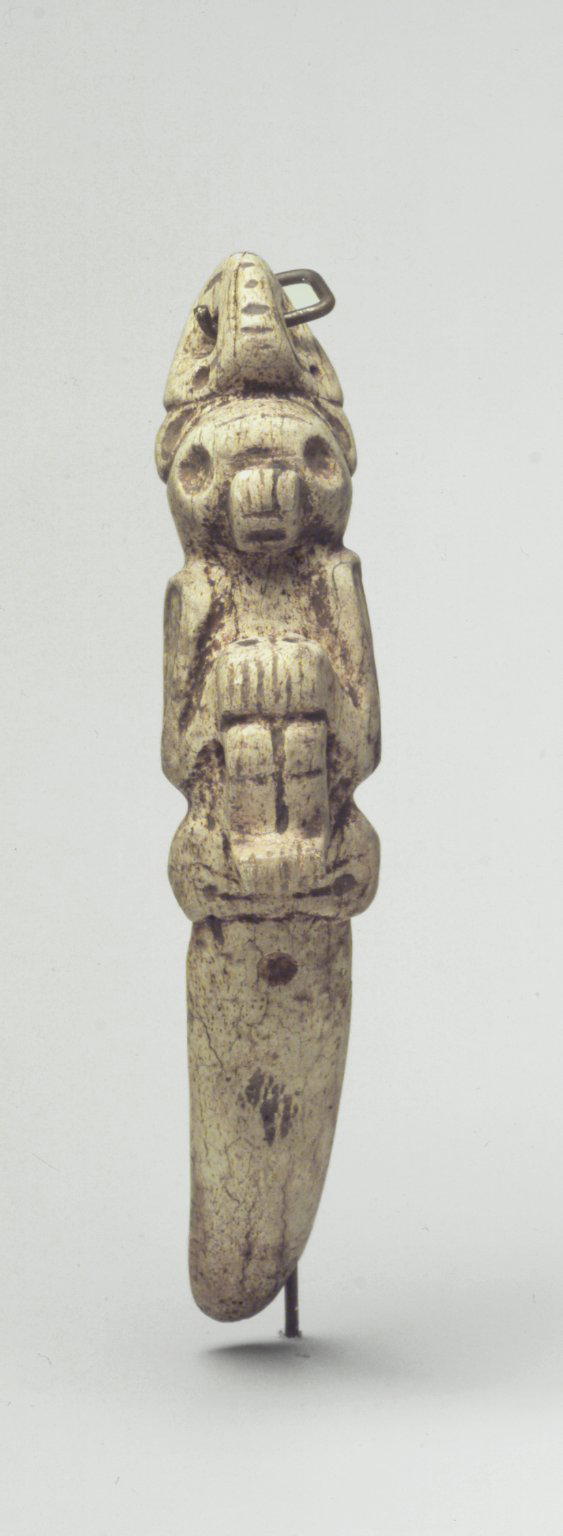Ritual Spatula or Swallow Stick
Taino

Brooklyn Museum photograph
Object Label
The Taino of the Caribbean islands centered their religion on the worship of zemis, or deities. Shamans (behiques) served as intermediaries between supernatural and natural worlds. They communicated with deities by inhaling cohoba powder, a hallucinogen that was mixed with tobacco to maximize its effect. Carved spoons were used to ladle the powder, which was then inhaled through the nose with a tube. Before ingestion, the shaman purified himself by purging with a vomiting stick. Ritual objects of bone and wood such as the ones seen here were exquisitely carved with images of zemis, who helped the shaman achieve ecstatic states.
Caption
Taino. Ritual Spatula or Swallow Stick, 1200–1500. Bone, 6 1/2 x 1 1/4 x 2 1/2 in. (16.5 x 3.2 x 6.4 cm). Brooklyn Museum, Anonymous gift, 1997.175.1. (Photo: Brooklyn Museum)
Gallery
Not on view
Collection
Gallery
Not on view
Collection
Frequent Art Questions
Why is there such a broad time period here? (1200-1500)
 Actually, dating that piece to a 300-year time period isn't a broad time period for that culture since these objects were used over a very long time period and were made in such a similar way throughout time, that they are hard for curators and scholars to put an exact date on them. The dates are generally attributed to the time period when the culture flourished.The older the object, the more broad the time period possibilities might be. If you look in the ancient Egyptian and Assyrian collections, you'll see that some pieces have date ranges of 800-1,000 years!
Actually, dating that piece to a 300-year time period isn't a broad time period for that culture since these objects were used over a very long time period and were made in such a similar way throughout time, that they are hard for curators and scholars to put an exact date on them. The dates are generally attributed to the time period when the culture flourished.The older the object, the more broad the time period possibilities might be. If you look in the ancient Egyptian and Assyrian collections, you'll see that some pieces have date ranges of 800-1,000 years!Tell me more.
 This would have been used by shamans who inhaled a hallucinogenic powder to communicate with deities. Before ingesting the powder via carved spoon, vomiting sticks were used to induce vomiting, cleansing the shaman before the ritual began.
This would have been used by shamans who inhaled a hallucinogenic powder to communicate with deities. Before ingesting the powder via carved spoon, vomiting sticks were used to induce vomiting, cleansing the shaman before the ritual began.
Have information?
Have information about an artwork? Contact us at